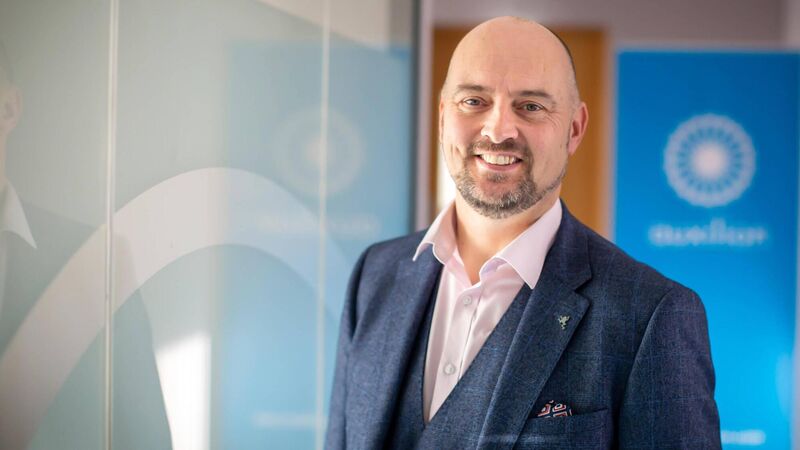Employers need help to manage staff burnout and quiet quitting

Paul Schmitz, group sales director with I.T. Alliance, says that small and large firms alike realise they need to enable managers to know how to engage with and monitor staff who are working remotely.
Employers are rapidly developing new approaches to managing employee burnout and quiet quitting, says Paul Schmitz, group sales director with I.T. Alliance.
A survey carried out by Censuswide for staff resourcing firm I.T. Alliance, found that 46% of companies have witnessed employee burnout in their organisation, while 39% of business leaders admitted to facing issues around quiet quitting (a trend where employees put no more effort into their jobs than is absolutely necessary).
“There are a number of workplace trends that have come to greater prominence with hybrid working,” says Paul Schmitz. “You are more likely to see changes in someone’s behaviour when they’re sitting next to you than if they’re working remotely.
“When some people working remotely are not managed well, you may see their loyalty wane. People can become disenfranchised and less motivated to drive themselves to do a fantastic job.
“Many companies have hired extensively during Covid, so there are now some people who have never physically met their colleagues. That can make it harder to fully communicate a company’s culture. But, while Covid has accelerated these trends, they are not totally new. You just need to enable managers to know how to engage with and monitor staff who are working remotely.”
Mr Schmitz said that staff members of I.T. Alliance client companies like Dell, HP and IBM have been successfully working full-time remotely for decades. He said that smaller firms can learn from the experience of bigger corporations in managing remote workforces.
“At I.T. Alliance, we’ve also had people working remotely for a long time. Some of our clients in the UK might, for example, bring all their staff into London on a Wednesday. They’re geared up to make the most of the time that they’re all together. You use that time differently to the days when everyone is working remotely.”
Similarly, it is easier for managers to spot and engage with burnout when they can see changing behaviour in a person sitting at a desk in front of them. With a hybrid or full-time remote working model, manages need other mechanisms.
For instance, burnout often presents itself as a deterioration in performance. Managers can use their regular catchups to look for signs of burnout and to consider solutions.
“Managers have to be trained to ask the question ‘How are you?’ and then pause and listen rather than jump in too soon. Catchups, whether remote or on-site, are about wellness and asking the right questions, engaging and listening.
“A lot of our clients are international companies with a focus on delivering services, so they’re all about the importance of their people. We’re mostly dealing with their UK and Irish staffing resources, delivering solutions focused on people, process and technology.
“I don’t see any great difference between Irish workplaces and other cultures when it comes to listening and engaging with employees. Our survey was quite insightful on what people see as their biggest workplace challenges.”
The survey — hosted for I.T. Alliance Resourcing Services, part of the I.T. Alliance Group — found that 43% of business leaders say they have inadequate staffing resources to meet current business needs, while 33% cite in adequate technological resources as a major challenge.
The survey of 100 Irish-based c-suite executives in companies with 250+ employees showed that 45% of executives expect to increase staff numbers in 2023, most notably in healthcare (88%), finance (67%), and HR (67%).
Meanwhile, 46% of business leaders are in the process of rightsizing their team, while 46% are also reviewing their workspace requirements with plans to either reduce or close office space in 2023.
Of the 46% witnessing employee burnout, manufacturing and utilities came out top (71%), followed by finance (67%) and HR (67%). Some 35% of business leaders have suffered from burnout themselves. At 63%, those working in healthcare were most impacted.
Some 44% of business leaders are optimistic their business will grow in 2023 and 52% don’t think there will be a recession. Optimism was highest among those working in HR (67%), arts and culture (60%), and IT and telecoms (55%).
Paul Schmitz commented: “Business leaders are currently reviewing their requirements around workforces and workspaces to find the best way forward, plan for the future and ensure they can fulfil their own objectives.
“With this in mind, coupled with the current economic climate and the ever-present skills gap, it’s clear that companies need to be more fluid and agile than ever when it comes to their resourcing capabilities. This means balancing the current demand for services and their long-term plans, which can be incredibly difficult.
“While businesses don’t want to overestimate requirements around resources, as many have done in recent years, they also can’t afford to pass up opportunities to drive growth due to a lack of people or skills. By engaging with resourcing partners, businesses can better plan their strategies and budgets, while taking advantage of the ability to scale up or down for projects as and when needed.”













